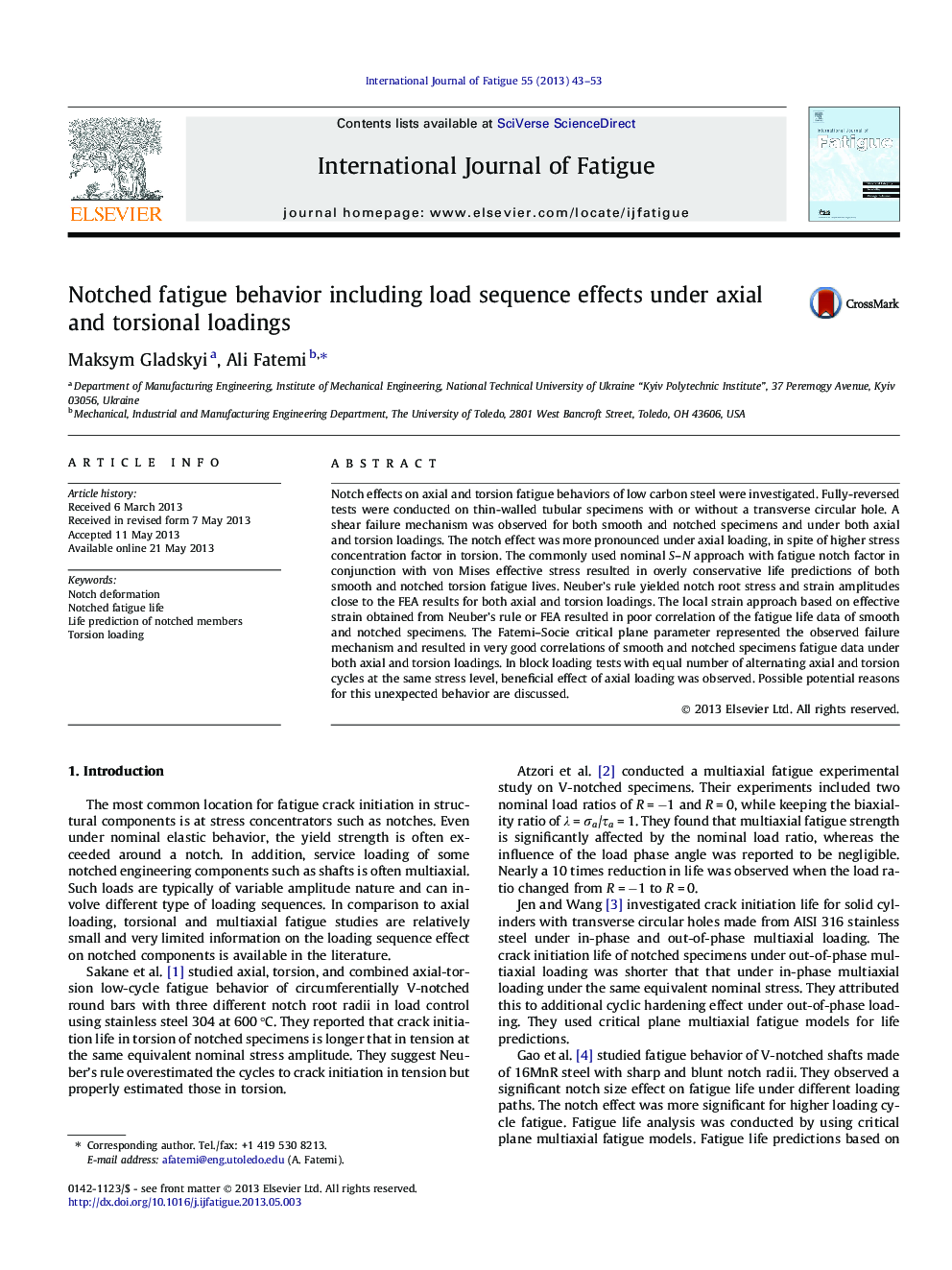| Article ID | Journal | Published Year | Pages | File Type |
|---|---|---|---|---|
| 776871 | International Journal of Fatigue | 2013 | 11 Pages |
•Notch effect is investigated under axial and torsion loadings.•Neuber’s rule yields notch root stress and strains close to FEA results.•The common nominal stress and local strain methods cannot correlate fatigue data.•Fatemi–Socie critical plane parameter correlates all fatigue data very well.•In block loading tests, unexpected beneficial effect of axial loading is observed.
Notch effects on axial and torsion fatigue behaviors of low carbon steel were investigated. Fully-reversed tests were conducted on thin-walled tubular specimens with or without a transverse circular hole. A shear failure mechanism was observed for both smooth and notched specimens and under both axial and torsion loadings. The notch effect was more pronounced under axial loading, in spite of higher stress concentration factor in torsion. The commonly used nominal S–N approach with fatigue notch factor in conjunction with von Mises effective stress resulted in overly conservative life predictions of both smooth and notched torsion fatigue lives. Neuber’s rule yielded notch root stress and strain amplitudes close to the FEA results for both axial and torsion loadings. The local strain approach based on effective strain obtained from Neuber’s rule or FEA resulted in poor correlation of the fatigue life data of smooth and notched specimens. The Fatemi–Socie critical plane parameter represented the observed failure mechanism and resulted in very good correlations of smooth and notched specimens fatigue data under both axial and torsion loadings. In block loading tests with equal number of alternating axial and torsion cycles at the same stress level, beneficial effect of axial loading was observed. Possible potential reasons for this unexpected behavior are discussed.
